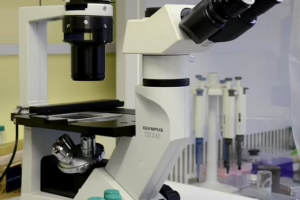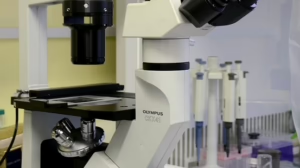Chlorophyll and Change: Understanding How Plants Adapt to Environmental Stressors
Introduction
Plants are remarkable organisms that not only sustain themselves through photosynthesis but also play a crucial role in supporting life on Earth. Central to this process is chlorophyll, the green pigment responsible for capturing light energy. But beyond its role in photosynthesis, chlorophyll is intertwined with how plants cope with environmental stressors. This article explores the multifaceted relationship between chlorophyll, plant adaptability, and the various stressors that threaten plant life, showcasing the intricate mechanisms that enable resilience and sustainability in the plant kingdom.
The Role of Chlorophyll in Photosynthesis
What is Chlorophyll?
Chlorophyll is a green pigment found in the chloroplasts of plants, algae, and cyanobacteria. It plays a vital role in photosynthesis by absorbing light energy, primarily in the blue and red wavelengths, while reflecting green light, which gives plants their characteristic color. There are several types of chlorophyll, with chlorophyll a and chlorophyll b being the most prominent in higher plants. [1]
The Photosynthetic Process
The process of photosynthesis involves converting light energy into chemical energy stored in glucose. This transformation occurs in two stages: the light-dependent reactions and the Calvin cycle. Light-dependent reactions capture solar energy, while the Calvin cycle utilizes this energy to produce glucose. Chlorophyll’s efficiency in harvesting light directly influences the overall productivity of these processes, making it crucial for plant survival and growth. [2]
Environmental Stressors Affecting Plants
Plants face various environmental stressors that can impact their growth, development, and productivity. Some of the most significant stressors include:
1. Abiotic Stressors
Abiotic stressors are non-living environmental factors that can have detrimental effects on plants. Common abiotic stressors include:
-
Temperature Extremes: High temperatures can lead to heat stress, while low temperatures can cause chilling injuries. Both extremes can affect chlorophyll synthesis and function.
-
Water Availability: Drought conditions can lead to water stress, affecting photosynthesis and causing a decrease in chlorophyll content.
-
Salinity: High salt concentrations can hinder water uptake, impairing nutrient absorption and affecting overall plant health.
- Light Intensity: Excessive light can lead to photo-oxidative stress, causing damage to chlorophyll and other cellular components.
2. Biotic Stressors
Biotic stressors arise from living organisms that can negatively affect plants. These include diseases, pests, and competition from other plants.
-
Pathogens: Fungal, bacterial, and viral pathogens can induce stress responses in plants, affecting chlorophyll levels and photosynthetic efficiency.
- Herbivory: The feeding activity of insects and animals can physically damage plant tissue, reducing chlorophyll content and disrupting photosynthesis.
The Physiology of Plant Responses to Environmental Stress
Chlorophyll Degradation and Synthesis
When plants encounter environmental stressors, their chlorophyll content may change. Chlorophyll degradation can be a defense mechanism triggered by stress conditions. For instance, during drought or excessive light, chlorophyll may break down more rapidly, leading to a yellowing of leaves—a phenomenon known as chlorosis. [3]
Conversely, plants can also enhance chlorophyll synthesis in response to favorable conditions or mitigated stress. This balance between synthesis and degradation is critical for maintaining photosynthetic capability under variable environmental conditions.
Stress Response Mechanisms
Plants have evolved various stress response mechanisms that help them survive and adapt to changing environments. These mechanisms can be broadly classified into:
-
Reactive Oxygen Species (ROS) Scavenging: Stress conditions often lead to the overproduction of ROS, which can damage chlorophyll and other cellular components. Plants have developed antioxidant systems to scavenge these reactive molecules and mitigate their harmful effects. [4]
-
Gene Expression Changes: Environmental stress can trigger the activation of specific genes involved in stress response pathways. These genes can promote the synthesis of protective proteins and enzymes that help maintain chlorophyll levels and photosynthetic efficiency.
- Metabolic Adjustments: Plants may alter their metabolic pathways in response to stress. For instance, during drought stress, a plant may redirect energy from growth to survival mechanisms, such as accumulating osmoprotectants that help retain water and protect chlorophyll from degradation.
The Role of Chlorophyll in Plant Adaptation and Resilience
Adaptation to Drought
Drought is one of the most significant factors affecting plant growth and productivity. In response to prolonged water deficit, many plants exhibit a range of adaptations, including alterations in chlorophyll content and photosynthetic pathways. Evidence suggests that certain plants are capable of maintaining higher chlorophyll levels during drought stress, enabling continued photosynthesis and growth. [5]
- Stomatal Regulation: Under drought conditions, plants often close their stomata to reduce water loss. While this minimizes transpiration, it can also limit CO2 uptake, impacting photosynthesis. However, some species have adapted by enhancing their water use efficiency, allowing them to maintain chlorophyll synthesis even under limited water availability.
Adaptation to Salinity
Salinity stress poses significant challenges for many plants, especially in coastal and arid regions. Chlorophyll content often decreases in response to high salt levels, leading to reduced photosynthetic activity. However, certain halophytic plants have developed strategies to thrive in such environments.
- Salt Exclusion and Accumulation: Some halophytes can exclude salt from their tissues or actively accumulate it in vacuoles. This adaptation allows them to maintain functionality, including chlorophyll synthesis, enabling photosynthesis in saline conditions. [6]
Adaptation to Temperature Extremes
Temperature extremes can also affect chlorophyll content and functionality. High temperatures can induce heat stress, leading to the denaturation of chlorophyll and decreased photosynthetic efficiency. On the other hand, low temperatures can slow down metabolic processes, impacting chlorophyll synthesis.
- Heat Shock Proteins: In response to heat stress, plants synthesize heat shock proteins (HSPs) that help refold denatured proteins, including chlorophyll-binding proteins. This adaptive response aids in protecting chlorophyll and sustaining photosynthesis during high-temperature episodes. [7]
Adaptation to Light Intensity
Excessive light can lead to photo-oxidative stress, damaging chlorophyll and impairing photosynthesis. However, plants have adapted by employing photoprotective mechanisms.
- Non-Photochemical Quenching (NPQ): Many plants utilize NPQ to safely dissipate excess light energy as heat, preventing chlorophyll damage. This mechanism involves the reconfiguration of light-harvesting complexes in chloroplasts to protect against overexcitation of chlorophyll molecules. [8]
Implications for Agriculture and Ecosystem Management
Sustainable Practices
Understanding how chlorophyll and plant adaptations function in response to stressors can inform agricultural practices aimed at improving crop resilience. Sustainable practices such as:
-
Drought-Tolerant Varieties: Breeding and selecting for crop varieties with enhanced drought tolerance can lead to more sustainable agriculture, particularly in arid regions.
- Soil Management: Practices that improve soil structure and water retention, such as cover cropping and reduced tillage, can support higher chlorophyll production and overall plant health.
Climate Change and Future Challenges
As climate change intensifies, plants will face increasing stressors including altered precipitation patterns, rising temperatures, and shifting light conditions. Understanding their adaptive responses becomes crucial for predicting ecosystem changes.
- Monitoring and Research: Continued research on plant adaptation mechanisms will aid in developing resilient species that can thrive under future environmental conditions. [9]
Conclusion
Chlorophyll serves as more than just a pigment; it plays a pivotal role in how plants adapt to environmental stressors. Through complex physiological processes, plants adjust their chlorophyll levels in response to varied abiotic and biotic challenges, showcasing their resilience and adaptability. The intricate relationship between chlorophyll and plant adaptation has significant implications for agriculture and ecosystem management, especially in the face of climate change. By fostering an understanding of these mechanisms, we can better support plant health and sustainability in a rapidly changing world.
References
- [1] Taiz, L., & Zeiger, E. (2010). Plant Physiology. Sinauer Associates.
- [2] Raven, J.A., & Geilfus, C.-M. (2016). Chlorophyll Functions and Its Role in Plant Metabolism. Photosynthesis Research, 129, 525-540.
- [3] Ouzounidou, G. (1992). The Role of Chlorophyll in the Photosynthesis Process. Journal of Plant Physiology, 139(1), 9-17.
- [4] Apel, K., & Hirt, H. (2004). Reactive Oxygen Species: Metabolism, Oxidative Stress, and Signal Transduction. Annual Review of Plant Biology, 55, 373-399.
- [5] Chen, Z., & McMahon, J. (2022). Chlorophyll and Drought Resistance in Plants. Journal of Experimental Botany, 73(1), 45-58.
- [6] Flowers, T.J., & Colmer, T.D. (2008). Salinity Tolerance in the Halophyte Atriplex and Related Categories. Annual Review of Ecology, Evolution, and Systematics, 39, 681-705.
- [7] Waters, E.R., & Sutherland, L.W. (2021). The Role of Heat Shock Proteins in Plant Stress Response. Plant Cell Physiology, 62(7), 1096-1108.
- [8] Müller, P., Li, X.-P., & Niyogi, K.K. (2001). Non-Photochemical Quenching. A New Mechanism for Photoprotection. Nature*, 411(6831), 891-896.
- [9] IPCC (2021). Climate Change 2021: The Physical Science Basis. Contribution of Working Group I to the Sixth Assessment Report of the Intergovernmental Panel on Climate Change.
This article aims to facilitate a comprehensive understanding of the relationship between chlorophyll, plant adaptability, and environmental stressors within the context of ecological resilience and agriculture. The provided references will direct readers toward further exploration of the concepts discussed.


























Add Comment